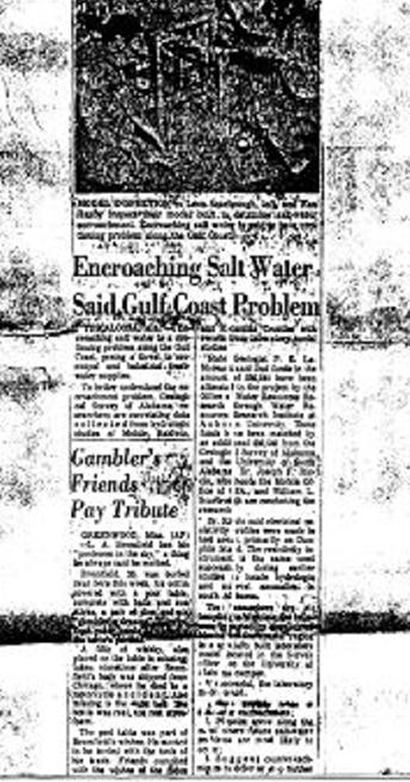Saltwater Encroachment
OAI's initial work with saltwater encroachment began with Dan O'Donnell landing a groundwater development project in 1995 for a coastal golf facility that needed a fresh water supply to supplement their irrigation needs during times of drought. The difficulty facing our client was three-fold. First, they were located in the coastal zone and any well in the area producing in excess of 50 gpm would require a permit. Second, the permit had to show that operation of the well would not adversely effect the quality of the water in the aquifer tapped by the well. Third, the area in question was reported to hbe at risk for saltwater encroachment, see article on the right.
Dan's research began with an evaluation of well records and published reports on the area. The well records were used to develop a critical understanding of the area's hydrogeology and ultimately led to the identification of six significant aquifers underlying the project area, three more than published reports had identified. Once the area's aquifers were identified, each well in the area was assign to the aquifer from which it produced. This information was used to identify an aquifer not tapped by a public supply well and, more importantly, one not associated with "reported saltwater encroachment" problems.
On the strength of the research compiled by Dan, the target aquifer was drilled and found to be present at the depth it was projected as being. Testing indicated the aquifer's water was acceptable for irrigation use. Subsequently, a 500 gallon per minute irrigation well was completed and permitted in this area that had been deemed off limits by the experts due to saltwater encroachment. Since 2000, the well has and continues to provide a quality irrigation source of supply to meet the facility's needs with no adverse impact to the aquifer's water quality (i.e. no saltwater encroachment).
Through the development of this supplemental irrigation supply, O'Donnell's client was able to maintain their irrigation needs which in turn allowed their facility to remain one of the nicest golf courses on Alabama's Gulf Coast.
|
 |
Dan's initial research into saltwater encroachment in Coastal Alabama has provided OAI with the information to support permitting eight additional wells subject to Alabama's coastal regulation. These wells include three irrigation wells, four industrial supply wells and one public supply well. The combined permitted capacity of these eight wells is 5.39 million gallons per day. None of these wells, some dating back to 1995, are showing any indications of saltwater encroachment.
Dan's expertise in coastal permitting has also led to the determination that a coast permit was not required. Two of these projects were located at a plant where one of their wells was permitted. Had that plant managers called on OAI for the permitting work, a screening model would have shown there was no permit required for their well either sqaving them permitting costs and years of sampling they are currently performing. It's only money.